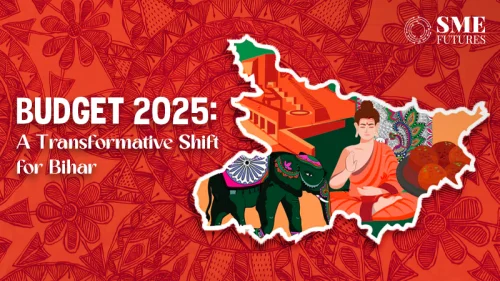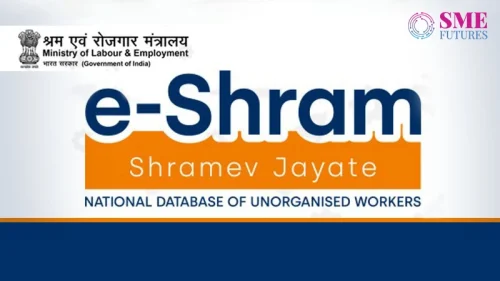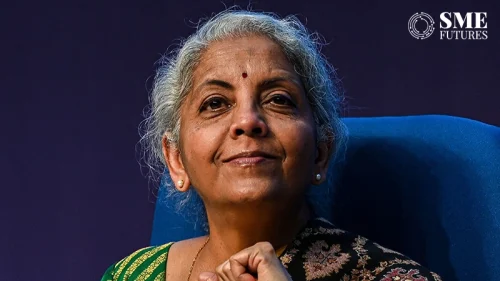Transitions and changes are happening all around us. Every industry and organisation have gone through some kind of transformation. The COVID-19 outbreak has changed how these industries function and operate.
The push towards technology adoption and digitisation became the bedrock that engendered every other change that took place during the pandemic. With curfews and lockdowns in place for a long time, companies switched to remote work to sustain their businesses.
Online meetings and events saw a huge rise in both demand and popularity. Technology took centre stage as almost every company started organising online meetings and conferences. The edtech industry and other educational platforms let go of their traditional teaching methods to teach online.
“The landscape of the events business in India will change drastically over the next 2 to 3 years with government events leading the pyramid to deliver an annual growth of more than 200 per cent,”
says Samit Garg, Co-Founder and Director, E Factor and SkyWaltz.
From online music concerts with prominent musicians and celebrities taking to the online stage to perform for their audiences at home, to the corporates, tech companies and FMCGs, all are spending heavily on online engagement events like virtual conferences, summits, online trade shows and exhibitions.
The pandemic caused a marked downslide in the traditional offline live events. The market of live events was severely affected with businesses scrambling to find other alternatives to keep themselves going. The organised live events segments’ revenues saw a drop from 83 per cent to 27 per cent during the lockdown period.
It was only after a year in 2021 that the segment saw a rise in revenues to 32 per cent and this is projected to increase further down the line. Although, they still have a long way to go before they reach the 83 per cent mark again.
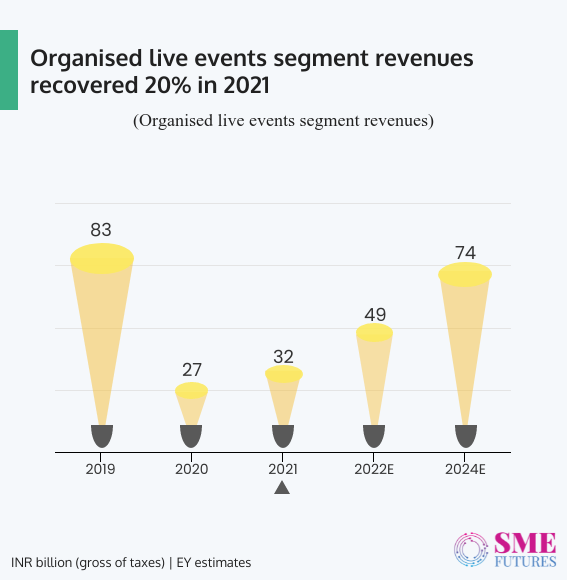
The Immediate impacts on events during COVID
The technology, FMCG and financial services sectors were the most prominent customers of the events industry, spending the most on conducting online conferences, summits, workshops, exhibitions and on online business meetings as well.
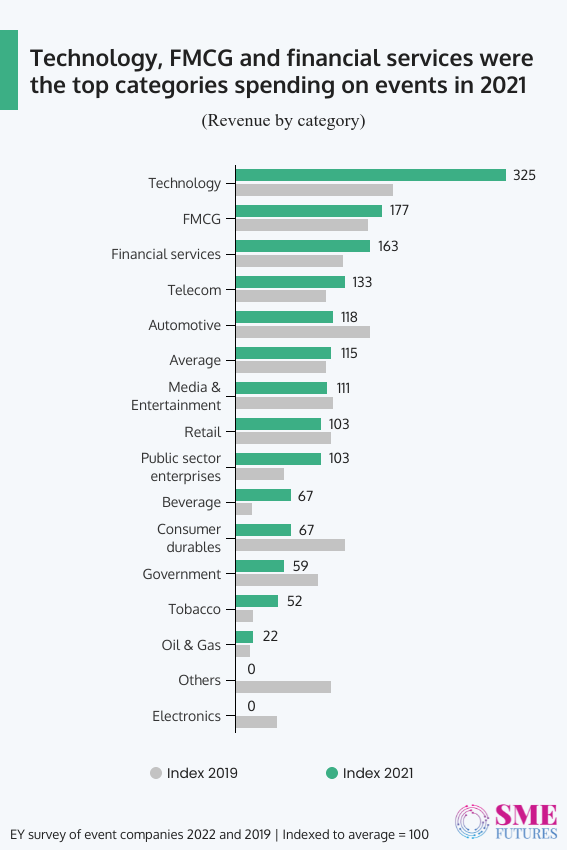
While the revenues of the sectors which once relied on events for promotions saw a drop, the businesses had to deal with multiple problems that were expensive to counter. Chip shortages, increasing input costs and supply chain constraints were some of the notable problems that these companies had to handle. Budget constraints tied the hands of the government organisations as well, forcing them to curb their spending on events.
A shift from the traditional methods of event execution and management
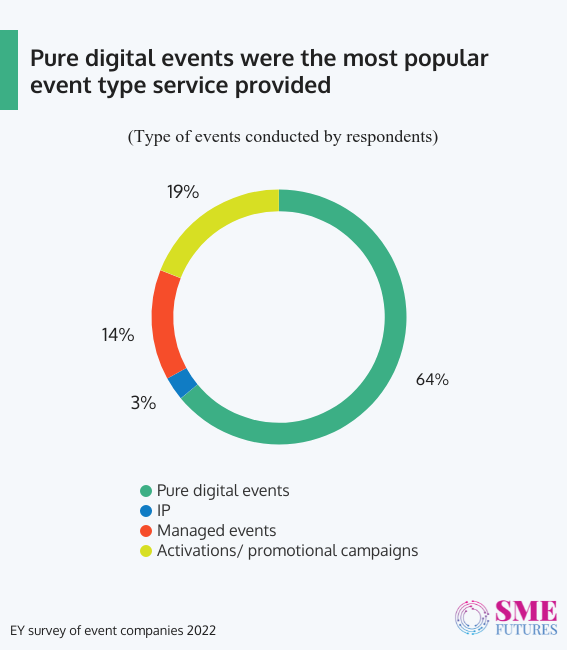
There was also a shift from managed events to purely digital events due to the curbs that were imposed during the outbreak of the virus. The numbers went down from 50 per cent to 14 per cent for managed events. While the online events market for purely digital events witnessed a growth of 88 per cent in 2021; its users during 2019 were just 27 per cent.
Purely digital events will continue to see a rise as many people are now accustomed to the ease and flexibility that the online arena provides. The factor of cost-effectiveness also needs to be considered as online events are much cheaper to organise as compared to the high costs that are incurred while organising managed events.
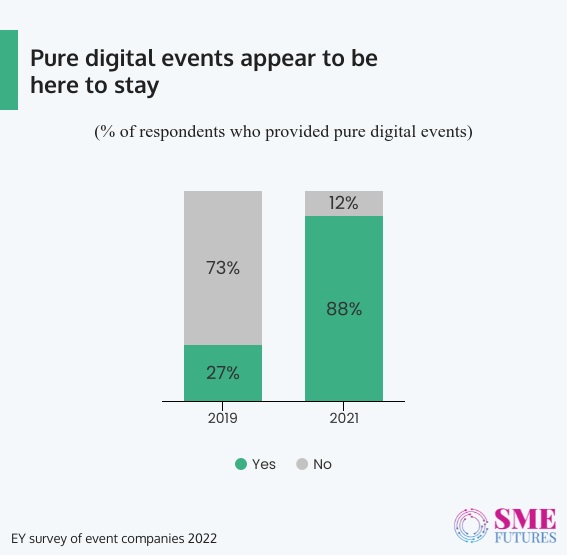
Around 38 per cent businesses managed to earn a revenue of more than 50 per cent by using online platforms for conducting various sorts of events like product launches, seminars, concerts etc. The need for feedback, surveys, public engagement, employee engagement and networking metrics along with the need to attract a large audience for potential lead generation are some of the essential factors due to which these businesses want online events to be a part of their operations even after the pandemic induced restrictions have been lifted.
“We are seeing transformative shifts in fan experiences and modes of engagement. Improved connectivity, cheaper data and digital literacy are taking sporting experiences to new users across linear and digital screens. Beyond serving new cohorts of fans, we continue to push the boundaries of personalisation, immersion, and interactivity to deepen the passion fans have for the sport,”
says Sanjog Gupta, Head of Sports, Disney Star.
Digital event adoption and its challenges
Switching to a completely different mode for business communications and for engaging with one’s audience, partners and vendors is not an easy job. Though, with the help of several innovate ways of online marketing for completely engaging with the audience and providing them with a seamless and enriching experience, this challenge was overcome in time. Content creators and engineers are the backbone of this digital transformation since they have the new age skill sets that are required for it across a variety of platforms. Their prospects certainly look bright in this era of digitisation. Technology integration for those companies that were being operated via mostly manual processes and functions was certainly a hard task. Data privacy and security concerns prevailed among the SMEs, and this was a challenge that had to be surmounted for total technology integration.
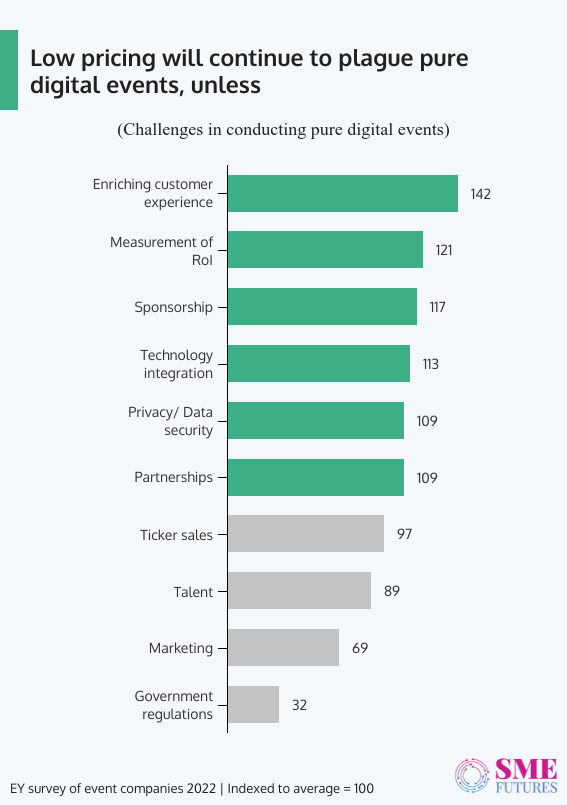
Measuring and determining the Return on Learning (ROL) is an important aspect to gain knowledge about how your platform or service is performing, for maintaining your records and for budgetary reasons as well. From training costs to the income directly related to training, all of these can be managed by measuring the ROL. Although, even here, you need the proper expertise and knowledge that is required for this field.
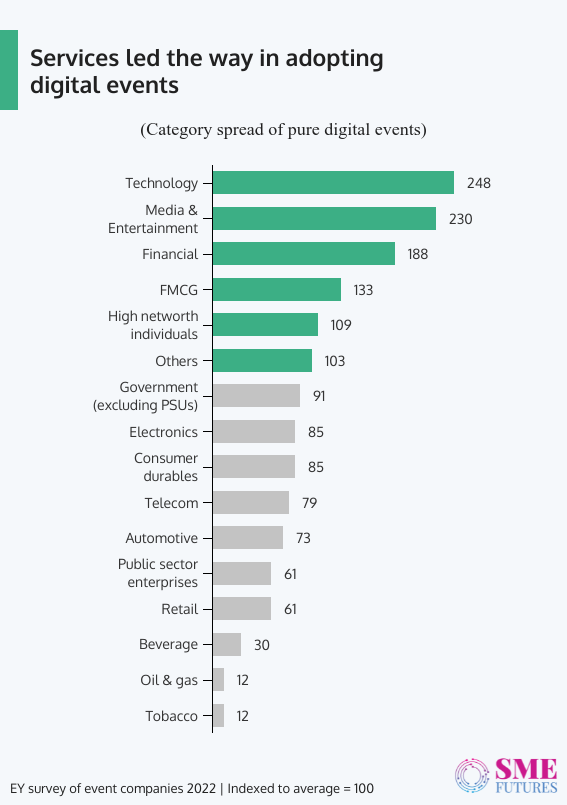
The rise in digital event adoption is notable, with industries from every sector bringing their businesses into the online arena. The tech, media and entertainment and financial services sectors took the lead in adapting to digital events. D2C businesses grabbed this opportunity to connect with their partners and vendors, while the B2B businesses made the use of online events to connect with their customers, partners and vendors as well.
The future and new opportunities post COVID-19
The world is opening up as the days roll by. Things have started to come back to normal with the easing of restrictions and the removal of the lockdown rules and regulations. Live online events will start to face competition from managed events, even though the world will never be completely offline again as was the general scenario before the pandemic hit us. The traditional ways of event management and execution can be seen making a comeback with live managed events like the Oscars and the IIFA being held with full capacity audiences in attendance.
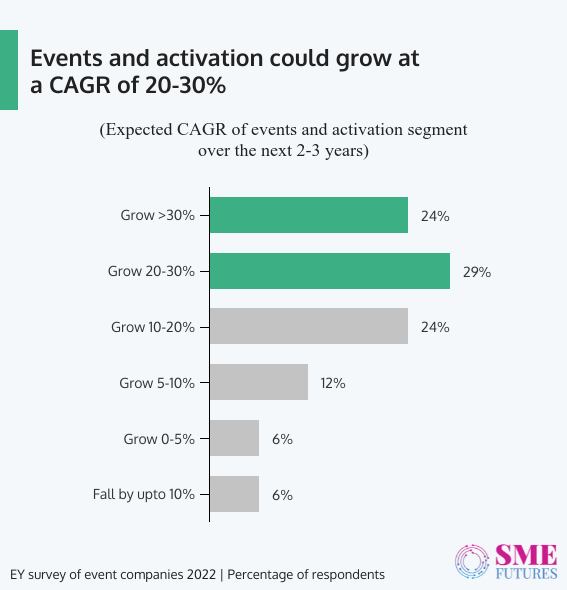
The events and activation industries will witness a rise in the coming years. This will happen due to several factors, with the main one being the lifting of the caps and curbs that were imposed due to COVID-19. The increase in the number of vaccinations, the rise in medical preparedness and the opening up of public transport, along with masks being made non-mandatory at some places are some of the factors that will build the confidence of the people in this sector. On-ground events such as weddings, receptions, corporate events, etc. will witness a surge. Events like the IPL, the ISL, the Asia Cup and other ICC events are also being held keeping in mind the required rules and regulations. State elections across four states have been conducted with general elections coming up in 2023.
“The events business is set to recover lost ground in 2022. Televised events will return and enable fans to engage with the stars that they love. The international season for Bollywood artists has started off well. There is a backlog of sporting events too. And this time, the events will be three-dimensional: physical, online and metaversical,”
points out Mohamed Morani, Managing Director, Cineyug group of companies.
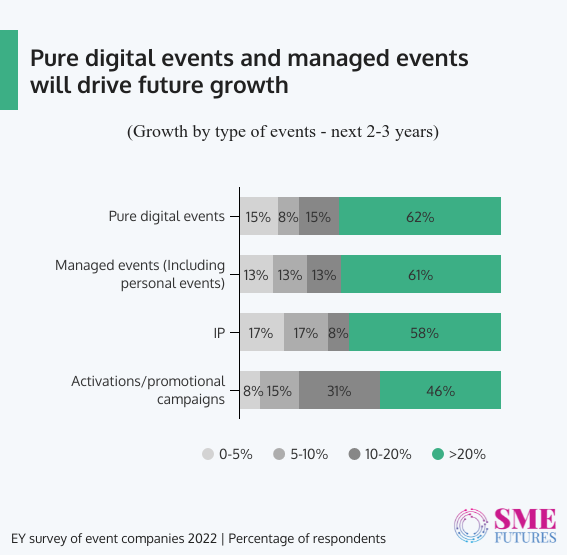
There will be growth and development across all types of events. Purely digital events and managed events will take the top spots among every other kind of event. Purely digital events have managed to make a space of their own which will now stay embedded in the working of many institutions and firms. They have proved to be the best platform for engaging customers for the D2C businesses and are also helping in building communities.
Due to the changes in the customer-business relationship and consumer behaviour, brands have to adapt to the new requirements of the market and engage with their audience in various new ways. There are some aspects on which brands can focus to better connect with their consumers and their target audience, aspects like D2C community management, media property-led events, experiences for hybrid and remote workforces, virtual avatars, premium event experiences for audiences, format fluidity and paying attention to the changes in the MSME, agricultural and rural requirements.
Focusing on these aspects will help companies and their brands to reach multiple communities and audiences. The lead to consumer conversion will witness an exponential rise. The MSME, rural and agriculture sectors will also experience a rise if the focus is shifted to their development by the government, which can be done by providing loans to the necessary people and communities. They will play an essential part in moving this sector out of the financial doldrums.
“The event industry has reset itself to be led by technology and creativity. Future experiences will be immersive and engaging, with technology enabling the speed of augmentation and outreach to global audiences. The event-venue is no longer restricted by walls…the venue and the audience have become limitless,”
remarks Sabbas Joseph, Founder and Director, Wizcraft International Entertainment Pvt. Ltd.
Technology is advancing day by day and there is a need for format fluidity across different formats. This will be a challenge for the sectors who are dependent on technology. The metaverse universe is also grabbing a lot of attention and it is only a matter of time before we see webinars and conferences being held in the metaverse.






